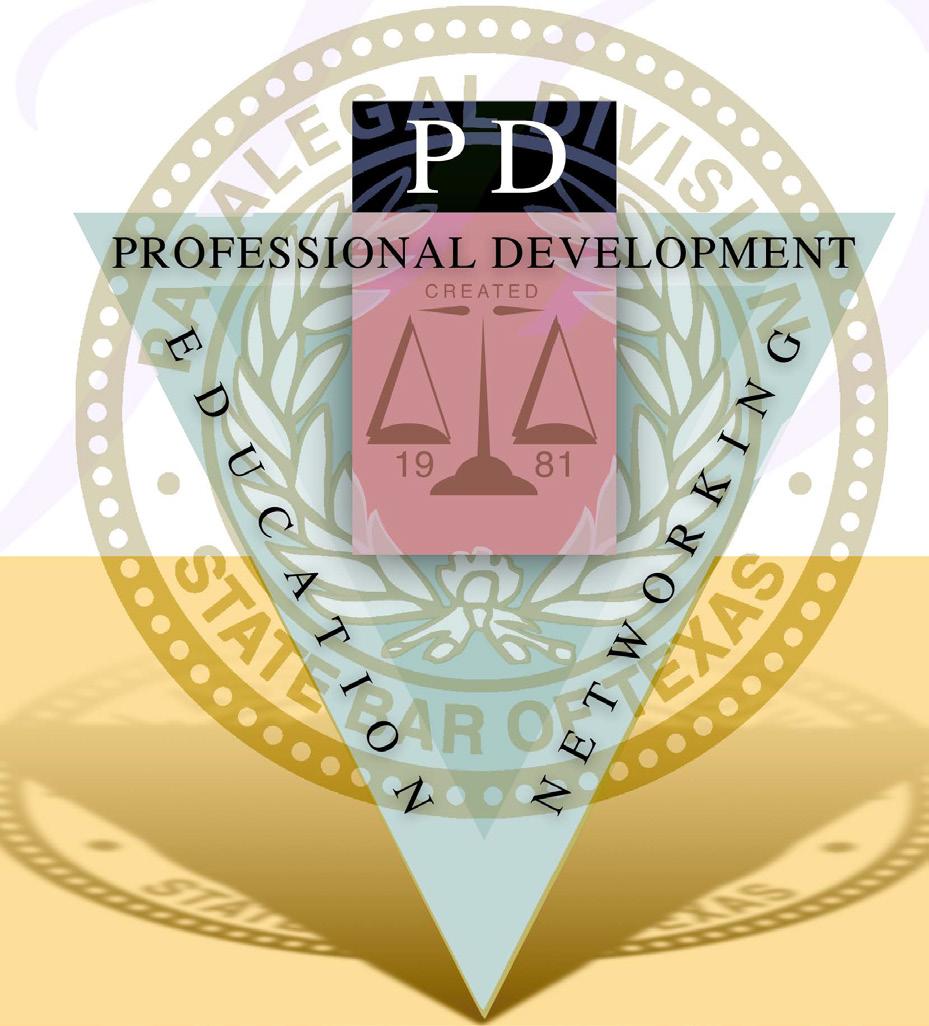
9 minute read
HOW TO BUILD A SUSTAINABLE DIVERSITY, EQUITY, AND INCLUSION ROADMAP
How to Build a Sustainable Diversity, Equity, and Inclusion Roadmap: NFPA’s Roadmap to Racial Equity and Belonging
By Melody S. Johnson, CP
In preparing this article, I know that my audience includes some who may have never dealt with racism but let us be truthful; most of you have been incited by your beliefs and accusations.
Some have the color-blind racial ideology, the belief that people should be regarded and treated as equally as possible, without regard to race or ethnicity. While a colorblind racial ideology may seem to be a pathway to achieve equity, it ignores the manifestations of racist and discriminatory laws and policies which preserve the ongoing processes that maintain racial and ethnic stratification in social institutions.
Racism is insidious, and racist policies and practices have undergirded not only the nature of our economy but our growth as a Federation. Getting at these deep roots requires specific attention to ensure we are being initiative-taking to embed antiracism in all that we do and to minimize the negative, disproportionate outcomes experienced by being black in America.
I recently attended the Joint Conference in Minnesota, and I observed diversity firsthand. I sat amongst you, being the only black attendee in the audience. I listened to your concerns and questions, I even counseled some on how to manage diversity in your local association. A friend tried to protect me from what was obvious by the use of phrases, such as “different colored mayonnaise or mustard in my potato salad,” but it all boiled down to NFPA has a long way to go and for growth to be ever present, we will have to change our ways of thinking and stop talking about change, but instead, be about change.
There should not be any tolerance for racism, hate and discrimination, as in a healthy and safe society, all people and their diverse backgrounds are to be celebrated. More than tolerance, we need to move in the direction of honoring, celebrating, and learning; even if there is not diversity in your immediate association, now is the time to prepare until it is the norm.
Urgency, transparency, and accountability is what we as an association should strive for. Simultaneously, we must put in place accountability and transparency in our equity-driven work. Without these two things, it is all too possible to deprioritize the urgency. Conditions will never be perfect. And while conditions may improve, we must act on what we can do right now to reduce harm and help the people we serve. We cannot wait any longer, so it is time to make challenging decisions with urgency, and operate with a sense of responsibility, intentionality, and accountability to those of us who are experiencing inequity.
If NFPA is genuinely interested in growing the Federation, we must first establish strong leadership to eradicate racial and other forms of disparities in all aspects. NFPA should center equity in budgeting, planning procurement, and policymaking. If NFPA is going to succeed, it must establish public involvement through transformational community engagement, access to information, and decision-making opportunities. NFPA should look to improving equitable access to services, programs, and resources including education, access to justice, and opportunities to gain experience in the Federation and move in a direction to foster an inclusive and stronger association and promote equitable practices.
NFPA’s objectives in leadership should be a sense of normalcy, not just the talk, but why is building diversity such a hard pill for some to accept? The concepts of racial justice should be acknowledged and familiarized by using concepts and tools that will support efforts to put equity at the forefront. The Federation should organize efforts to build organizational capacity to all affiliated with NFPA for connection, cohesive and amplified
impacts. Foster both internal and external partnerships by reaching outside the box.
Those of us who take on the role of leadership in NFPA and local associations should embed racial equity into every part of NFPA. The role of leadership in NFPA is to guide and direct prominent levels operationalizing diversity, equity, and inclusion (DEI) work. Leadership from NFPA should inspire to expand by sharing and collaborating to build on what is already happening and what is going to happen regardless of whether you are ready to receive it.
As a Federation, we should strive to diversify and create inclusive teams, as racial disparities persist across key indicators of success in this country including health, education, housing, and economic opportunity among others. It is time for white people in America to truly contend with its legacy of slavery, and any attitude, behavior, practice, or policy that explicitly or implicitly reflects the belief that Black people are inferior to another racial group.
Anti-Black racism is reflected in interpersonal, institutional, and structural levels of racism. Those barriers may remain until white people in America truly begin to cope with its history. “There are those in this society that still hold on to the idea that the Civil War was not about slavery, it was about states’ rights or Northern aggression against slavery,” says Karlos Hill, a professor of African and African-American studies at the University of Oklahoma and the author of Beyond the Rope: The Impact of Lynching on Black Culture and Memory. As a Federation, we should familiarize ourselves with history that may or may not be pleasant for some of us to hear and/or receive or even accept. We must acknowledge that white people in America wronged people of color everywhere for years and years and compensate us for what you took from us. Our lands, our lives, our families, our names, our children, our dignity, and you know what it is still happening to us. Let us stop putting racism on the backburner, let us stop not dealing with it, let us stop saying they are just angry people of color, let us stop not doing anything about it by being hush-hush, let us stop calling them thieves or no-account people with no morals. Let us actively process identifying and challenging racism, by changing systems, organizational structures, policies and practices, and attitudes, to redistribute power in an equitable manner.
As a woman of color, I have been privy to racism all my adult life. That is the core of my existence. I only can speak on being black in America, because that is who and what I am, and I cannot change the color of my skin.
NFPA is the strength of all local associations and should be the beacon for honoring and including people of diverse backgrounds, identities, and experiences collectively and as individuals. NFPA should emphasize the need for sharing power and increasing representation of all associations that are systemically underrepresented and under-resourced. These differences are strengths that maximize the associations’ competitive advantage through innovation, effectiveness, and adaptability. (“Info Guides: Vocational Rehabilitation Library Toolkit: Diversity ...”) “The effort to treat everyone the same or to ensure that everyone has access to the same opportunities.” (“A Glossary for Shared Understanding”). However, only working to achieve equality ignores historical and structural factors that benefit some social groups and disadvantages other social groups in ways that create differential starting points.
As a Federation, our purpose should be to acknowledge the history and current realities of inequities and recognition that there are many types of exclusion and oppression based on identity. We should focus on the institutional level where racism occurs, addressing all areas of marginalization across the board and place racial equity at the forefront and center of an equity framework that distinguishes between individual, interpersonal, institutional, and structural racism.
NFPA should emphasize that targeted strategies are necessary to eliminate racial and other identity-based disparities and serve as a guiding precedent as the leader to all local associations. NFPA should dig into the how, why, and reasons for the pushback
against DEI. NFPA should familiarize itself with racial equity vision and values for how the work will happen and listen to your own presentations regarding leadership.
Do not just talk about it but instead, be about practicing what you preach. Get inspired by reading examples of how work is already happening in various other organizations. Which means you may have to look at other paralegal organizations. Prepare your future leaders and put in place true leaders that local associations can look up to.
What I experienced at the Joint Conference was not my idea of leadership. I saw people heheing and hahaing one minute in one setting and then when that person walks away, and we are in another setting, they are backbiting and backstabbing each other. We should review our shared goals and the strategies to begin or continue your diversity, equity, and inclusion work. Go out and research other affiliations that are not white and get involved. Reach out to other races that are just as talented as you are but have not had the opportunity to experience what you have attained through NFPA. Seek resources such as historic timelines, language guidance, and similar plans.
As leaders in NFPA we should all share in the enthusiasm of the work of NFPA’s Diversity, Equity, and Inclusion Committee and use its guidance as a roadmap, not a delineated set of chronological tasks. Our work towards racial equity is urgent, and should start with NFPA, but it also does not have a set end date because this is a journey. There are times when we will be able to move quickly to resolve issues and times when we will need to slow down. For example, we may progress more slowly when resources do not allow us to do everything we have in mind, but we must begin right away, and never stop moving.
The DEI Committee’s work provides concrete diversity, equity, and inclusion strategies while putting equity at the forefront to be incorporated across all aspects of NFPA. Take a breath and reflect on what actions you can take to advance equity and racial justice to benefit the whole of NFPA as leaders.
One of the objectives of NFPA’s DEI Committee is to build a roadmap to DEI and increase awareness. NFPA should embrace the DEI Committee and instead of pushing it back, join hands to build an inclusive culture and improve team engagement. Have you read NFPA’s Position Statement on Diversity, Equity, and Inclusion that you adopted in 2018? If not, you should; the preamble states: Melody S. Johnson is a graduate of Florida Metropolitan University in 1993 with an Associate’s Degree in Paralegal Studies. Melody became a Certified Paralegal through the National Association of Legal Assistants (NALA) in 2006. For over 30+ years, Melody has worked in a variety of large document production, complex litigation, construction litigation and personal injury cases, etc. In 2007, Melody relocated from Orlando, Florida and began her employment with Heygood Orr & Pearson, where she was the Senior Lead Paralegal on hundreds of pharmaceutical cases filed against the Fentanyl manufacturers In 2012, Melody joined Ramey Law Firm running a 1+ attorney law firm as Senior Litigation Paralegal, Case Manager, and Office Administrator Melody is currently serving as President-Elect of the Dallas Area Paralegal Association (DAPA) In January, 2023, Melody will become the second Black President of DAPA.
“One of the greatest resources of the paralegal profession is the racial, ethnic, cultural, religious, national origin, Indigenous heritage, marital or parental status, socioeconomic status, disability status, military service or veteran status, sexual orientation or identity, age, gender, and social diversity of its members. The National Federation of Paralegal Associations, Inc. (“NFPA”) takes great pride in this diversity. NFPA welcomes, respects, promotes and supports diversity, equity, and inclusion in all aspects of its membership, in its vendors and contractors, and with paralegal educators, paralegal students, the paralegal profession, the legal profession, bar associations, and the courts.”









